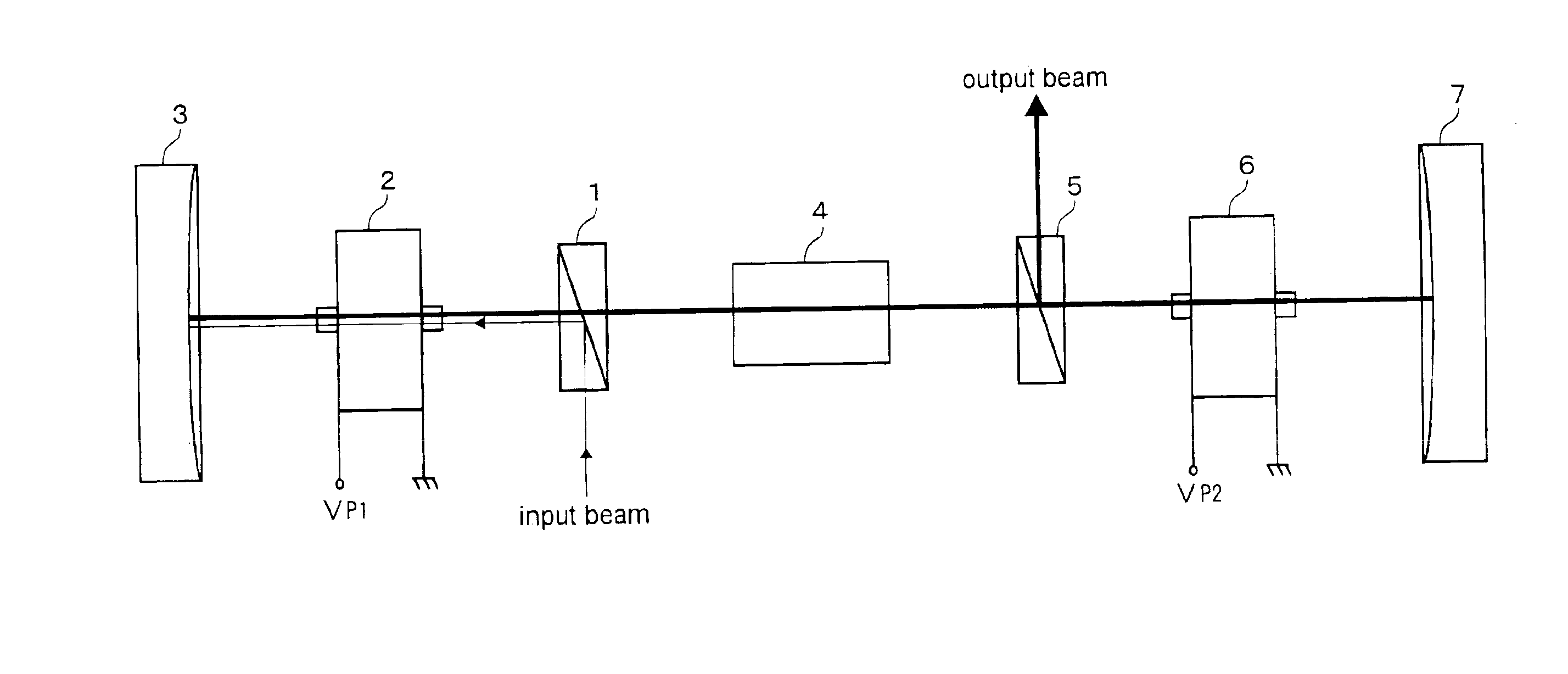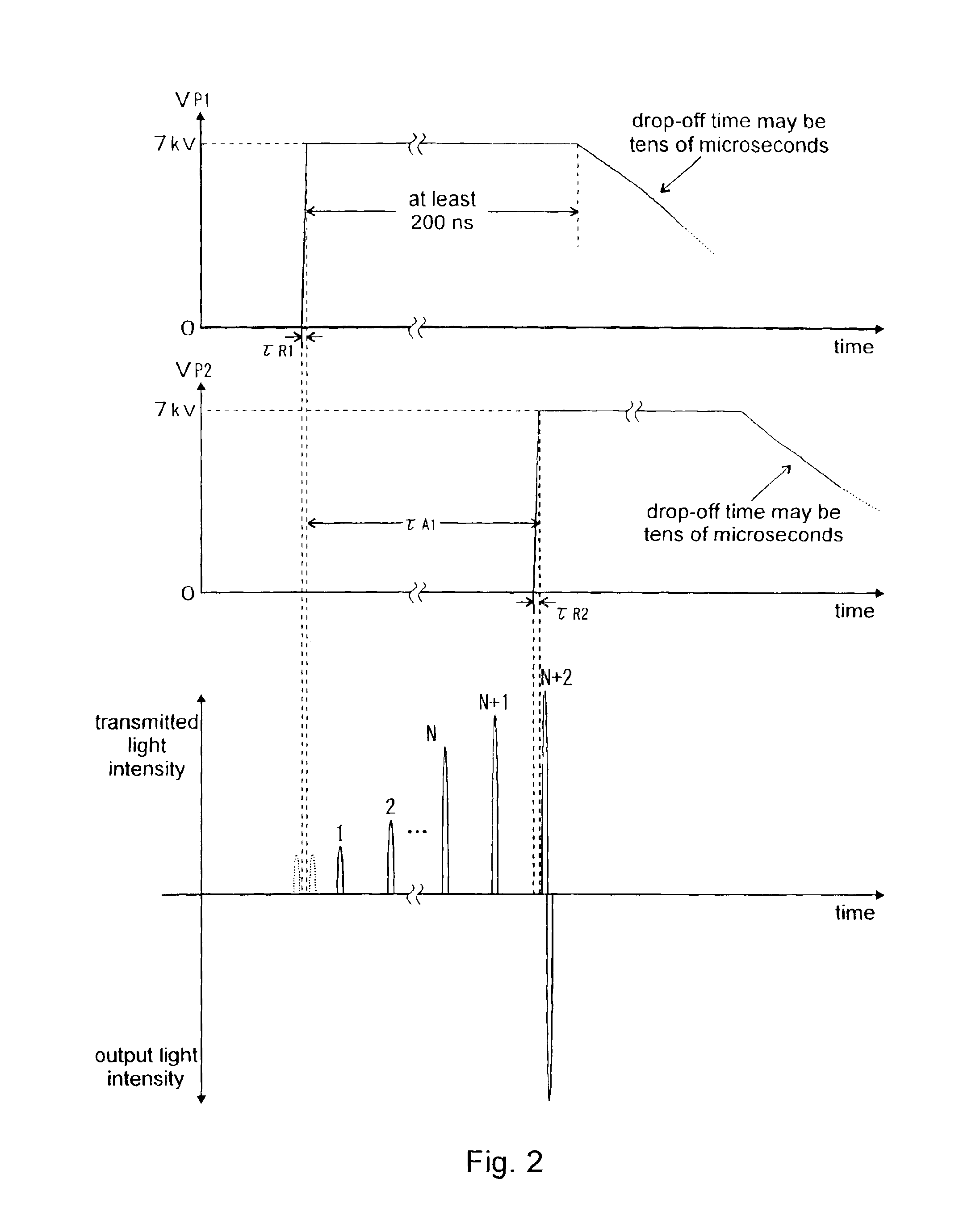Regenerative optical amplifier
a regenerative optical amplifier and amplifier technology, applied in the direction of laser arrangement, laser details, instruments, etc., can solve the problems of difficult to achieve symmetry in the rise and drop waveform of pulse voltage, placing restrictions on the control level, and complicated drive circuitry, etc., to achieve the effect of convenient operation
- Summary
- Abstract
- Description
- Claims
- Application Information
AI Technical Summary
Benefits of technology
Problems solved by technology
Method used
Image
Examples
first embodiment
[0030]Herebelow, embodiments of the present invention shall be described with reference to the drawings. FIG. 1 is a diagram showing the structure of a regenerative optical amplifier according to the present invention.
[0031]When a voltage is applied to a Pockels cell such that the polarization of a laser light pulse is rotated by 90 degrees with each passage through the Pockels cell, the direction of polarization will be rotated by a total of 180 degrees upon passing twice through the Pockels cell, thus restoring the original polarization. Therefore, two Pockels cells are used, with voltage being applied to only the first Pockels cell. As a result, the polarization of a light pulse which has passed twice through the two Pockels cells will be rotated by 90 degrees. Next, if voltage is applied to both the first and second Pockels cells, the polarization of the light pulse will rotate by 180 degrees. As a result, the polarization of the light pulse becomes the same as the polarization ...
second embodiment
[0059]FIG. 3 is a diagram showing the structure of a regenerative optical amplifier according to the present invention. The regenerative optical amplifier of the present embodiment (hereinafter referred to as “present regenerative optical amplifier” in this ), as shown in the drawing, comprises a polarizer 1, a Pockels cell 2, a reflective mirror 3, a laser crystal 4, a polarizer 5, a Pockels cell 6, a reflective mirror 7 and a quarter-wave plate 8.
[0060]Among these components, the polarizer 1, Pockels cell 2, reflective mirror 3, laser crystal 4, polarizer 6 and reflective mirror 7 are physically identical to the components of the above-described first embodiment, so that they will be indicated by the same reference numbers as in the first embodiment and their respective descriptions shall be omitted, but they functionally perform effects which are specific to the present embodiment. While the details will be made clear in the below-given description of the functions, it is possibl...
PUM
| Property | Measurement | Unit |
|---|---|---|
| length | aaaaa | aaaaa |
| time | aaaaa | aaaaa |
| time | aaaaa | aaaaa |
Abstract
Description
Claims
Application Information
 Login to View More
Login to View More - R&D
- Intellectual Property
- Life Sciences
- Materials
- Tech Scout
- Unparalleled Data Quality
- Higher Quality Content
- 60% Fewer Hallucinations
Browse by: Latest US Patents, China's latest patents, Technical Efficacy Thesaurus, Application Domain, Technology Topic, Popular Technical Reports.
© 2025 PatSnap. All rights reserved.Legal|Privacy policy|Modern Slavery Act Transparency Statement|Sitemap|About US| Contact US: help@patsnap.com



